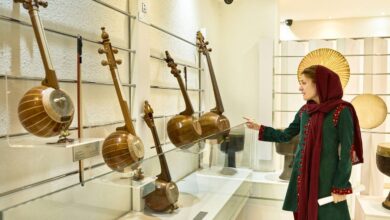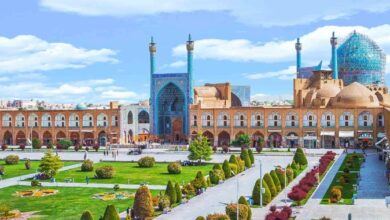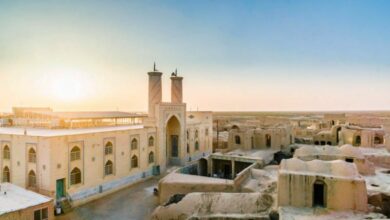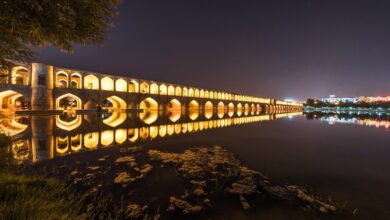Naqsh-e Jahan Square: Esfahan’s Timeless Glory
The Splendor of Naqsh-e Jahan Square: Iran's Cultural Treasure
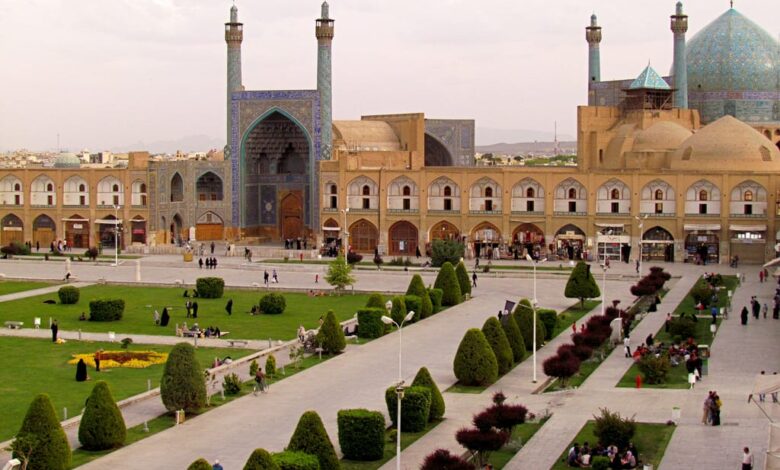
In the heart of Isfahan, Naqsh-e Jahan Square exemplifies Persian architectural brilliance and the vision of the Safavid dynasty. As a UNESCO World Heritage Site since 1979, it embodies Iran’s rich historical and cultural heritage. Naqsh-e Jahan Square is an architectural marvel and a lively cultural hub, blending the grandeur of the past with the vibrancy of the present.
This enduring symbol of Safavid ingenuity continues to be a focal point of activity and culture in Isfahan, attracting scholars, architects, historians, and travelers who wish to understand and appreciate the deep layers of Iranian history and art.
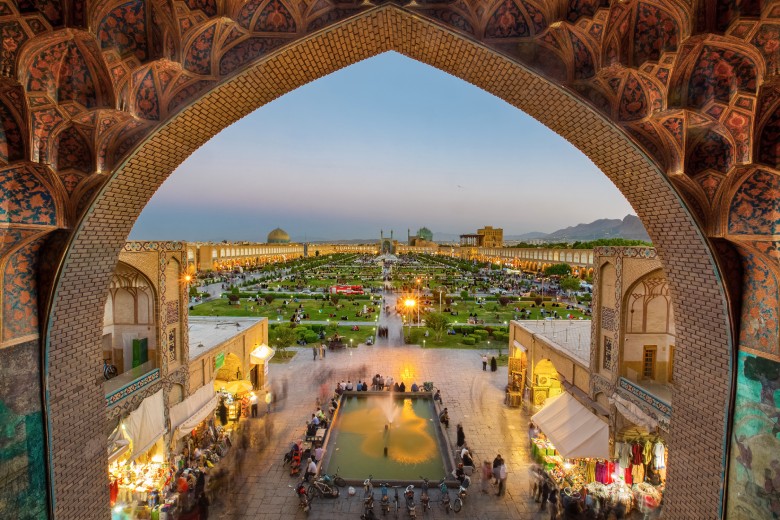
Contents
A Historical Overview
Naqsh-e Jahan Square, meaning “Image of the World Square,” was constructed between 1598 and 1629 during the reign of Shah Abbas I of the Safavid dynasty. Measuring 560 meters in length and 160 meters in width, it is one of the world’s largest squares. The design reflects Shah Abbas’s ambition to centralize political, religious, and economic life, transforming Isfahan into a majestic imperial capital—a capital that would not only reflect the power of the Safavid Empire but also serve as a lasting symbol of their cultural and religious ideals.
The square functioned as the centerpiece of Shah Abbas’s plan to elevate Isfahan as the Safavid Empire’s grand capital. Strategically positioned near the Zayandeh River, it was both a public space for large gatherings and a showcase for Safavid achievements.
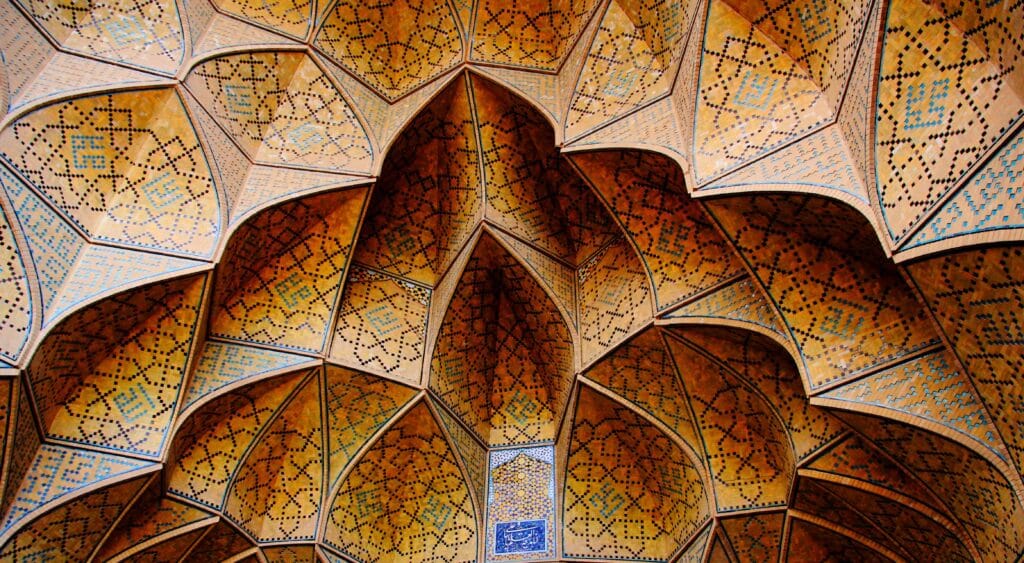
Hosting grand events like polo matches, military parades, religious celebrations, and vibrant markets, Naqsh-e Jahan was central to the cultural and social life of the city. The square’s impressive size and scale allowed it to accommodate thousands of people, making it an ideal venue for grand spectacles and an enduring symbol of the unity and strength of the Safavid Empire. It served as a bustling marketplace, welcoming traders and patrons from every segment of society, enhancing the economic importance of Isfahan.
Architectural Wonders Around the Square
The buildings encircling Naqsh-e Jahan Square exemplify Persian artistry, each representing different facets of Safavid life—religious, political, and commercial. These structures contribute to the historical narrative of the square, forming a cohesive ensemble that reflects the interconnectedness of various aspects of Safavid society:
1. Shah Mosque (Imam Mosque)
Occupying the southern side, the Shah Mosque stands out with its grand iwan, tall minarets, and turquoise-tiled dome. The intricate mosaic work and acoustics of the mosque are remarkable, with detailed tilework forming elaborate floral and geometric motifs. The mosque serves not only as a place of worship but also as a representation of the grandeur and sophistication of Safavid religious architecture.
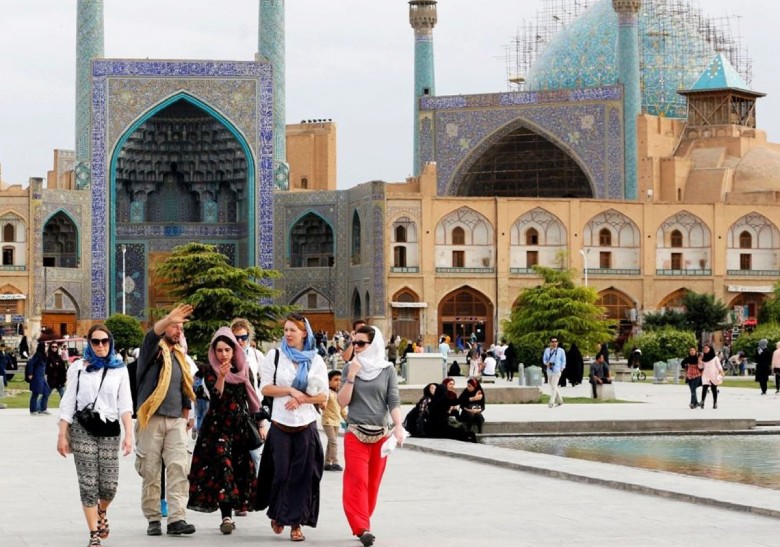
The entrance gate, adorned with Quranic inscriptions, adds to the mosque’s spiritual atmosphere. Its central courtyard, embellished with shimmering blue tiles and a tranquil reflecting pool, provides a serene space for contemplation, where the play of light and shadow invites introspection and connection to the divine.
The mosque’s four iwans are symmetrically arranged, each leading to different sections of the mosque. The acoustics beneath the main dome are expertly engineered, allowing even whispers to be heard clearly across the hall—symbolic of a deeper spiritual connection. The mosque also reflects the emphasis on craftsmanship and detail that was characteristic of the Safavid period, with artisans devoting years to the creation of the elaborate tilework and calligraphy that adorn its walls.
2. Sheikh Lotfollah Mosque
Located on the eastern side, the Sheikh Lotfollah Mosque was intended as a private place of worship for the royal family. Its absence of minarets and unique golden dome make it architecturally distinct. The interior features exquisite arabesque patterns and calligraphy, and the play of natural light filtering through the windows creates an intimate and serene atmosphere, intended to inspire a sense of peace and spirituality among its select visitors.
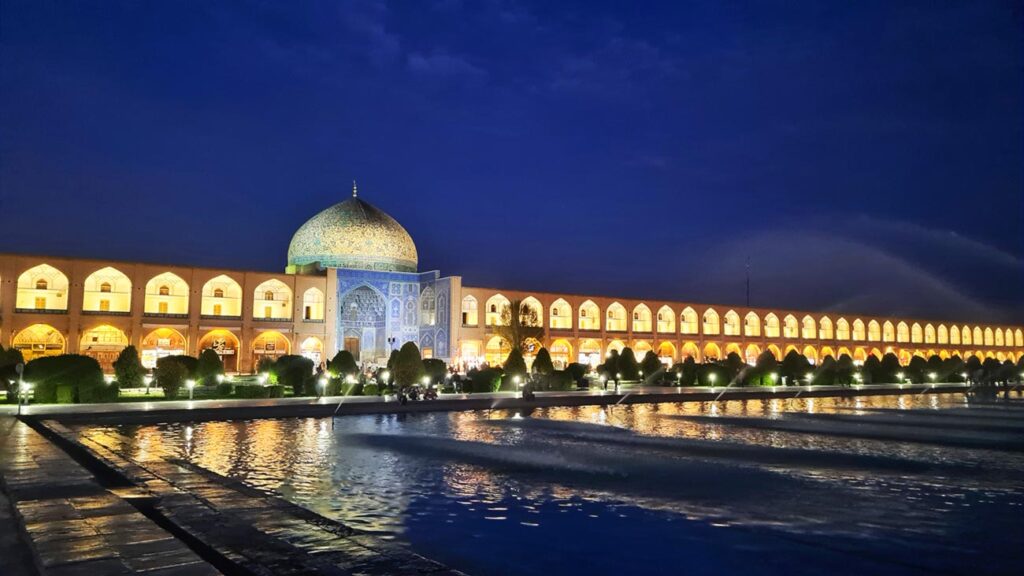
The dome’s color changes throughout the day, shifting from cream to deep gold, offering a continually evolving visual experience. This effect symbolizes the passage of time and the ever-changing nature of existence, enhancing the mosque’s spiritual ambiance. The mosque is also known for its elaborate tilework and the unique layout of its entrance corridor, which was designed with sharp turns to ensure the privacy of the royal women. The structure is a masterpiece of optical illusion, with its intricate tile designs appearing to change as the viewer moves through the space, offering new perspectives and insights at every angle.
3. Ali Qapu Palace
On the western side of the square stands the six-story Ali Qapu Palace, originally a royal residence and a reception space for visiting dignitaries.
The palace symbolizes the political authority of the Safavid rulers, and its grand design was intended to impress visitors and showcase the wealth and power of the Safavid court. The upper levels offer panoramic views of the square, while the terrace, supported by elegant wooden columns, provided Shah Abbas a perfect vantage point for observing events below.
Inside, the music room on the sixth floor features intricate stucco decorations shaped like musical instruments, enhancing the room’s acoustics and highlighting the Safavid appreciation for the arts. Music played a significant role in courtly life, and the design of this room, with its excellent acoustics, reflects the cultural sophistication of the Safavid dynasty.
The grand staircase and muqarnas (stalactite-like decorations) further reflect the architectural sophistication of the period, illustrating the grandeur and vision of Shah Abbas. Each floor of the palace serves a distinct function, with rooms dedicated to administrative purposes, entertaining foreign ambassadors, and cultural activities, symbolizing the multifaceted nature of Safavid governance.
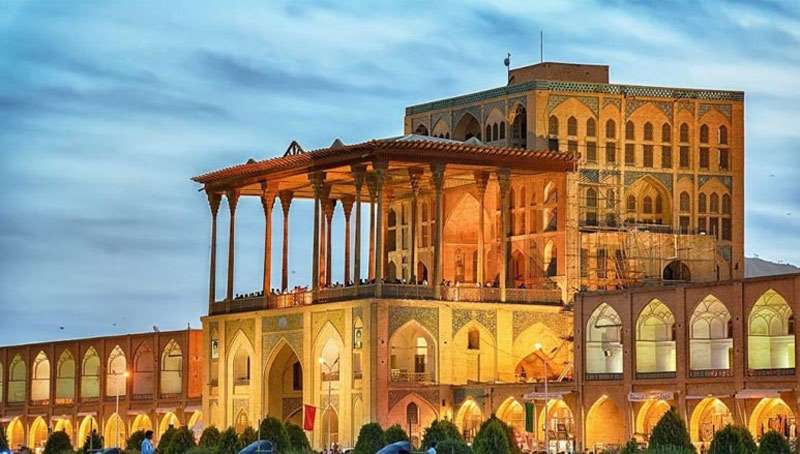
4. Qeysarie Gate and the Grand Bazaar
To the north, the Qeysarie Gate opens into the Grand Bazaar, a sprawling network of alleys filled with shops selling Persian rugs, spices, handicrafts, and other goods. This vibrant market has preserved Isfahan’s centuries-old trading traditions, serving as a testament to the city’s enduring economic vitality.
The Grand Bazaar not only functioned as a commercial hub but also as a social space where people from different walks of life could meet and interact, strengthening the community fabric of Isfahan.
Visitors can witness artisans at work, crafting jewelry or weaving carpets, which keeps the cultural heritage alive. This bazaar is not merely a market but a living museum of Persian craftsmanship, with each alley offering glimpses into traditional methods and practices passed down through generations.
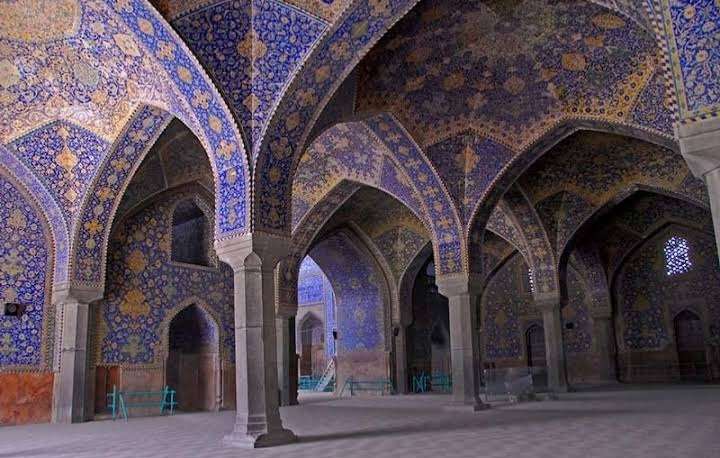
The bazaar also provides a sensory experience: the fragrance of spices, the bright colors of textiles, and the bustling sounds of commerce create a vibrant and dynamic environment. The Qeysarie Gate is adorned with frescoes depicting hunting and astrological scenes, emblematic of Safavid cultural interests. The bazaar’s architecture and layout are a testament to the Safavid Empire‘s economic prowess, blending commerce with artistic expression, and demonstrating the interconnectedness of trade, culture, and community life in Safavid Isfahan.
Cultural and Historical Significance
Naqsh-e Jahan Square has served as a dynamic hub of public life for over four centuries. Historically, it was the site of polo matches, military parades, festivals, and public gatherings, making it the beating heart of Isfahan. It was here that the Safavid rulers would demonstrate their power, celebrate religious holidays, and host public events, fostering a sense of unity and pride among the people of Isfahan. Today, it retains its vibrancy, drawing both locals and tourists as a cultural and social center.
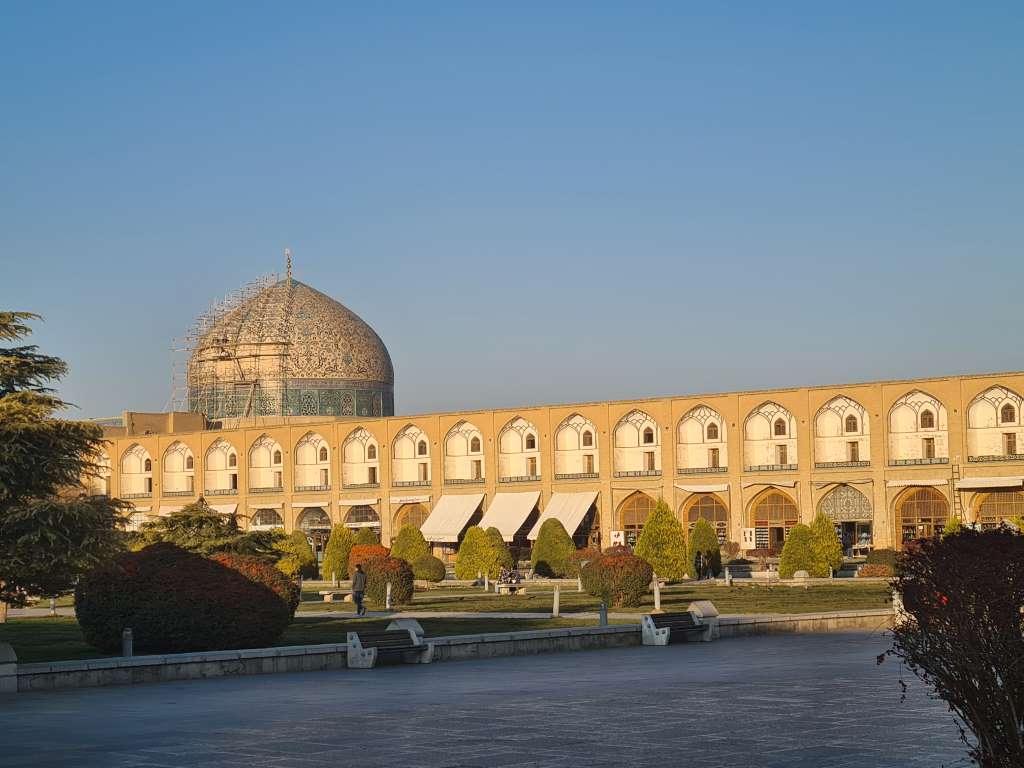
The square exemplifies the Safavid vision of integrating religious, political, and commercial life into a harmonious space. The architecture and urban planning reflect a sophisticated understanding of community balance and connectivity, with each structure designed to serve a specific role while contributing to the overall cohesion of the space. Naqsh-e Jahan Square remains a symbol of Iranian identity, where history and modernity coexist seamlessly, allowing visitors to experience the legacy of the past while engaging with the vibrant culture of present-day Isfahan.
Modern-Day Tourism at Naqsh-e Jahan
Today, Naqsh-e Jahan Square is a bustling destination, inviting visitors from around the world to explore its grandeur. Its historical importance blends effortlessly with its vibrant present, creating an atmosphere where past and present converge in a lively celebration of Persian culture. Tourists can take horse-drawn carriage rides, browse the bazaar for authentic Persian souvenirs, or relax on the manicured lawns. The best time to visit is at sunset, when the architecture is bathed in warm light, casting dramatic shadows and enhancing the square’s enchanting atmosphere.
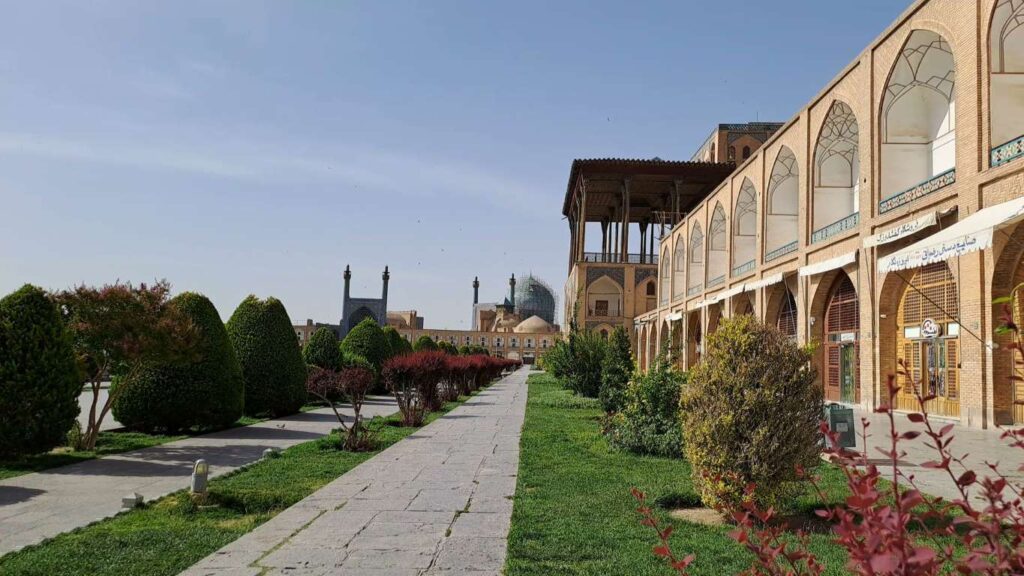
Cultural events are still held regularly at the square, providing a dynamic experience. Traditional music performances, handicraft exhibitions, and folk performances bring a slice of Iranian culture to life. The horse-drawn carriages, known as ‘Ghari,’ evoke nostalgia, while festivals transform the square into a colorful celebration of Isfahan’s cultural heritage. The square’s role as a venue for cultural activities is a testament to its enduring importance as a communal space that continues to bring people together.
The square is also a prime spot for observing local life. Families gather on the lawns for picnics, children play, and street performers entertain, adding to the lively and communal atmosphere. The juxtaposition of the grand historical buildings with the ordinary activities of daily life highlights the continuity of Naqsh-e Jahan’s role as a center of public life. This mix of grandeur and daily activity gives Naqsh-e Jahan a unique charm that feels both majestic and accessible, inviting visitors not just to observe but to participate in its living history.
Practical Information for Visitors
Getting There: Isfahan is easily accessible by air or road from major Iranian cities, and the square is centrally located. Public transportation and taxis make access convenient, but walking through the nearby streets offers a deeper sense of the city’s character and provides an opportunity to explore the rich tapestry of Isfahan’s neighborhoods, each with its own unique charm and history.
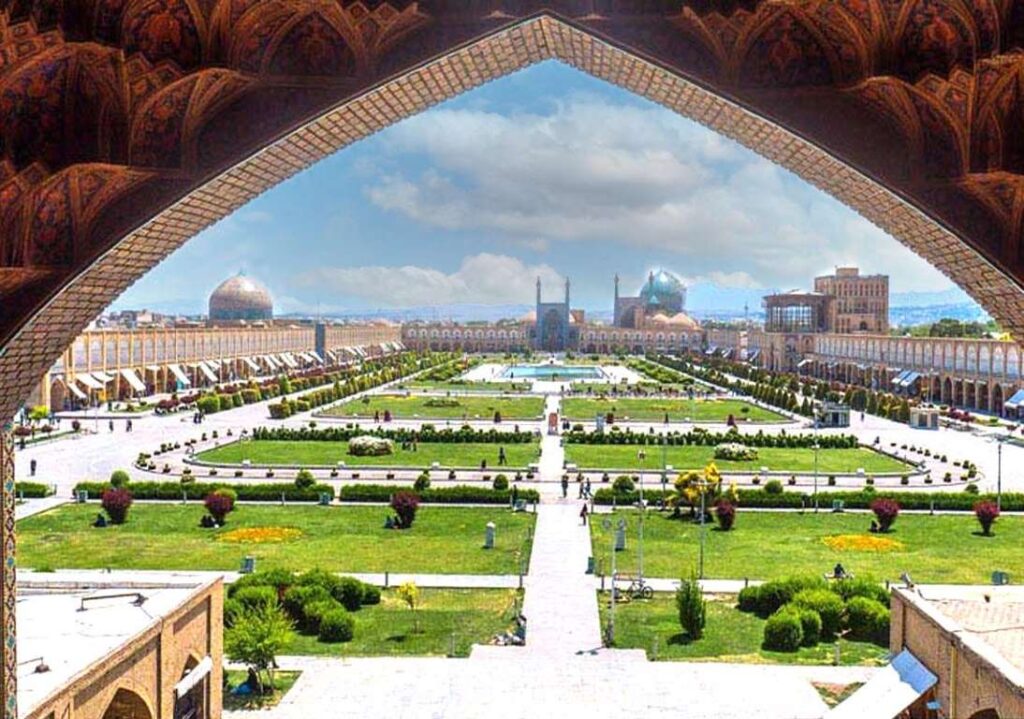
Best Time to Visit: Spring and autumn provide the most pleasant weather, ideal for exploring. During these seasons, the gardens around the square are in full bloom, adding to the visual appeal. Winter can be less crowded but chilly, while summer may be quite hot. The springtime, with its mild temperatures and cultural festivities, offers an especially picturesque experience, as the city comes alive with vibrant colors and celebrations.
Cultural Etiquette: Visitors should dress modestly, especially when entering mosques. Shoes must be removed before entering religious sites, and women are required to cover their hair. Respect for local customs not only honors the culture but also deepens the appreciation for the site’s spiritual significance. While photography is generally allowed, asking permission before photographing locals is considered polite. Engaging with the culture respectfully enhances the experience, allowing visitors to connect more deeply with the traditions and values of the local community.
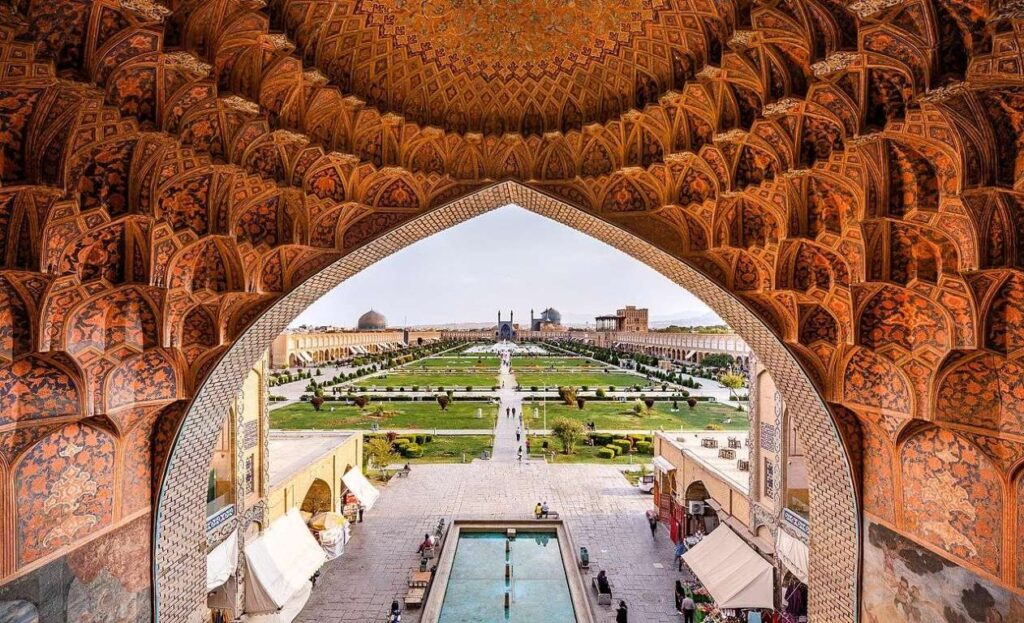
Nearby Attractions: Pair a visit to the square with Chehel Sotoun Palace, a Safavid masterpiece featuring intricate frescoes and a reflection pool, and Hasht Behesht Palace, known for its garden setting and exquisite stucco work. These nearby sites offer additional insight into the artistry and cultural richness of the Safavid period. Additionally, the nearby Zayandeh River and its historic bridges, such as Si-o-se-pol and Khaju Bridge, provide scenic walks and a glimpse into the engineering feats of the time, further complementing the experience of exploring Isfahan’s historical landmarks.
Voices from the Past and Present
Naqsh-e Jahan Square has inspired countless artists, historians, and travelers over the centuries. Its design continues to influence urban planning and architecture, not only in Iran but also in other parts of the world. The square’s beauty is celebrated in poetry, painting, and photography, making it an enduring subject of fascination. The writings of European travelers from the 17th and 18th centuries often describe Naqsh-e Jahan as one of the most magnificent squares in the world, praising its scale, beauty, and the sophistication of its design.
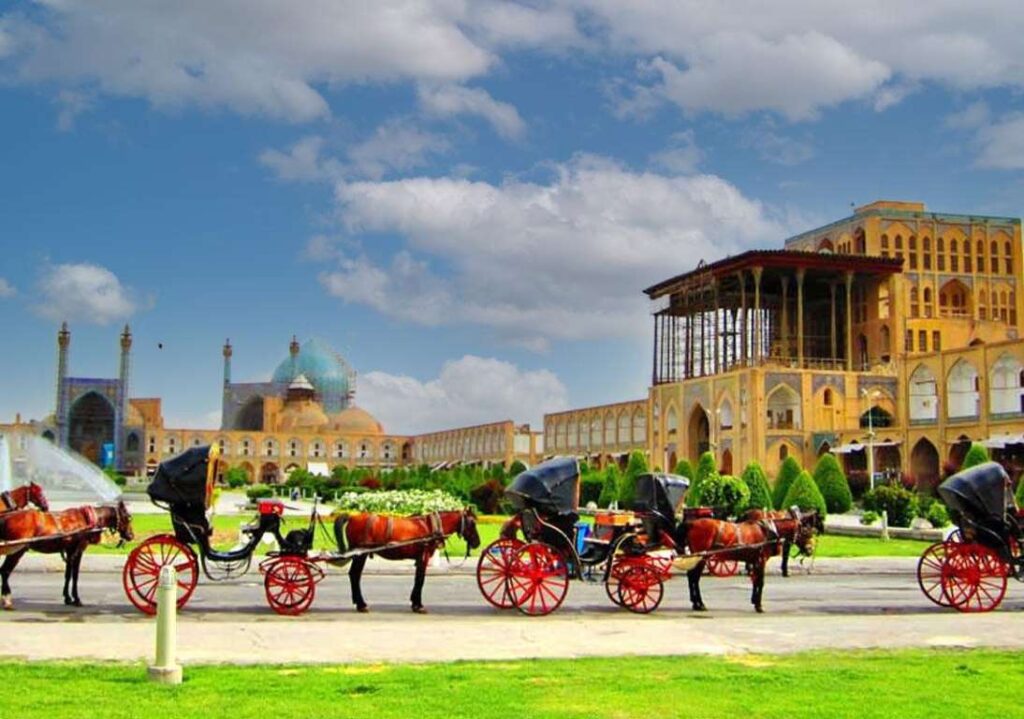
Historians consider Naqsh-e Jahan a prime example of the Safavid golden age—a period marked by cultural development and architectural innovation. Modern architects and urban planners study its design to understand how to create multifunctional public spaces that foster community and cultural identity. The square’s balance and harmonious layout serve as a model for integrating heritage with contemporary urban needs. Its influence can be seen in public squares and plazas around the world, where the emphasis is placed on creating spaces that are not only visually impressive but also functional and inclusive.
Conclusion
Naqsh-e Jahan Square is more than a landmark; it represents Persian heritage and cultural excellence. Whether you are an architecture enthusiast, a history lover, or a traveler seeking unique experiences, this square offers a window into the soul of Iran. It stands as a timeless reminder of a golden era, inviting all to experience the beauty of Isfahan firsthand. From majestic mosques and palaces to the bustling bazaar and serene gardens, every corner of Naqsh-e Jahan tells a story—a story of a civilization that cherished beauty, community, and balance.
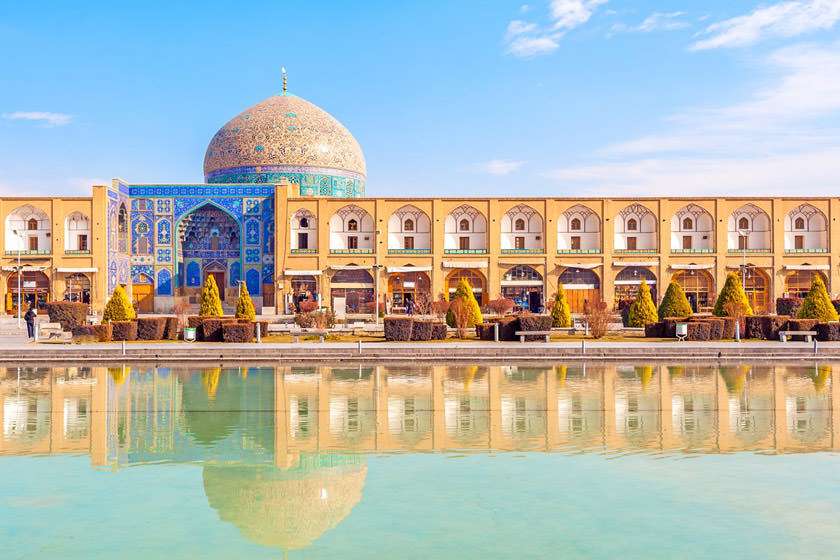
Naqsh-e Jahan Square encapsulates the essence of Isfahan—a city of poetry, art, and resilience. It represents where Persian history meets the joys of everyday life. Visiting Naqsh-e Jahan is more than sightseeing; it is an immersive journey into Iranian heritage, where every element tells a story. For those visiting Iran, this square stands as a beacon of rich history and a testament to the lasting beauty of Persian culture. It is a place where the past and present coalesce, offering an experience that is as intellectually enriching as it is visually captivating, and serving as an enduring symbol of Iran’s cultural heart.
Read More
